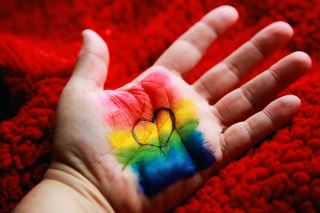Media
LGBTQ+ Hate Crimes: How Can We Stop These Attacks?
How to counter hatred and violence.
Posted October 8, 2023 Reviewed by Kaja Perina
Key points
- High-profile LGBTQ+ hate crimes have turned deadly in the US, UK, and around the world
- LGBTQ+ hate crimes and LGBTQ+ suicides are disproportionately high and are rising
- LGBTQ+ media expert Robert Conner calls for more accurate media representation of LGBTQ+ issues
- The visibility of "queer joy" is essential

Two men were stabbed outside London’s The Two Brewers gay bar in August. Days earlier, in a Brooklyn, New York gas station, O’Shae Sibley, a Black gay man, was fatally stabbed while voguing to Beyoncé. At the start of this year, Kenyan LGBTQ+ activist Edwin Chiloba was killed and his body was dumped by the roadside. While these horrific incidents were highly reported in the press, many LGBTQ+ hate crimes occur throughout the world without receiving any media attention.
LGBTQ+ Hate is Harrowingly Common Worldwide
From 2017 to 2022, sexual orientation hate crimes increased in England and Wales by 41%. In this same period, hate crimes against transgender Britons rose by 56%. LGBTQ+ suicide rates are disproportionately high in the US, South Korea, the Middle East and Northern Africa, and throughout the world.
In Uganda, two men are facing charges of “aggravated homosexuality” and may be punished with death sentences. 32 of 54 countries in Africa criminalize consensual same-sex sexual activity.
The Causes and Effects of Hate Crimes and the Culture of Hate
One way to look at hate crimes is to consider the “Psychology of Hate.” Humans are taught to be hateful against the “other.” We live in a “war culture” that promotes violence.
Extremist hatred, such as deadly anti-LGBTQ+ hate crimes, may at least partially be explained by the theoretical context of “In-Groups and Out-Groups.” When a person perceives someone else as different (the Out-Group), the person feels threatened and a survival mechanism gets triggered.
While in-groups and out-groups may help explain the causes of anti-LGBTQ+ hatred, the complex totality of “bias or violence, fears of rejection, and shame” that harm LGBTQ people is sometimes referred to as minority stress.
The field of traumatology affirms the well-known statement “hurt people hurt”, which means that a person who has unresolved trauma may resort to hurting others as an attempt to deal with their own internal discomfort. In psychology, a theory of shame called “the shame compass” by Nathanson (1992) proposes that one of the ways people mitigate their own shame is by attacking others. It is also common for people who grew up in highly homophobic households to learn a hateful mindset from their parents and become acutely homophobic in adult life.
The harmful effects of hatred and hate crimes against LGBTQ+ people are severe, particularly from a mental health perspective. The American Psychological Association (APA) examined The mental health effects of hate crimes and noted that a “2020 study found experiences of hate are associated with poor emotional wellbeing such as feelings ofanger and shame… Victims tend to experience poor mental health, including depression, anxiety, and suicidal behavior.”
Media Reporting on LGBTQ Hate Crimes
While tragedies like the murder of O’Shae Sibley sparked widespread media attention, the public might not understand that even when hate crimes do not lead to a victim’s murder, the victim will still likely develop long-term depression. Robert Conner, an expert in LGBTQ+ communications who authored guidelines on how corporations should communicate during Pride Month, said, “It is concerning that media attention mostly focuses on situations when LGBTQ hate crimes turn deadly, but the media—and the public—overlooks the countless everyday cases of hate crimes that lead to the victims developing debilitating anxiety.”
Looking back at history, mainstream media reporting on LGBTQ+ hate has improved, according to Vic Basile, the Human Rights Campaign’s (HRC) first executive director and author of Bending Toward Justice. “The mainstream media never used to report on LGBTQ+ discrimination, violence, or hate crimes. We were ignored, invisible, and despised in those days. Until the mid-1990s, we just weren’t worthy of media attention, I guess,” explained Basile. “The first time I recall the national media reporting on violence against an LGBTQ+ person was when Matthew Shepard was brutally killed in 1998.”
Countering Hate Can Begin with Education, Awareness, and Resources
The task of countering LGBTQ+ hatred and curbing the violence against LGBTQ+ people is complex. The causes and psychological theories behind hatred are so deeply rooted, some of which are rooted in human evolution. But now, experts believe that a multi-prong approach to disseminating educational resources, fostering LGBTQ+ allyship in schools and companies, and improving media reporting can significantly help.
“Only celebrating LGBTQ+ people in June isn’t enough. We exist year-round. October is LGBTQ+ History Month in the US, presenting an opportunity to learn,” Conner said. “Knowing about the slain individuals who altered LGBTQ+ history, such as Matthew Shepard and Fred C. Martinez Jr., can help us understand the present.”
Donna Paul, an elementary school Montessori teacher, suggests 11 “inclusive” activity ideas to celebrate LGBTQ+ History Month in classrooms, such as creating an LGBTQ+ history timeline, recording an LGBTQ story podcast, and designing LGBTQ+ hero trading cards.
“Education creates change. By distributing resources like the biographies of historical LGBTQ+ figures, companies foster allyship and ensure staff are engaged in grasping LGBTQ+ history.” Conner advised. “The media can also inspire change by covering not just brutal murders, but also the full breadth of nuances that LGBTQ+ people experience every day, like microaggressions and subtle forms of discrimination.”
Robert Conner says: “I believe it is also important for the media to show successful stories of LGBTQ+ people’s lives so that our communities don’t only see how LGBTQ+ endure and survive the world but how they can fully thrive. The “queer joy” visibility is essential because, despite all the hate crimes, it is indeed possible to find pockets of LGBTQ+ spaces in this world where it is safe to embrace the joy of being our authentic selves. And, let’s face it, “queer joy” is our best defence against homophobia, biphobia and transphobia because it encourages us to love ourselves and each other deeply.”
Most resources are available online and at no cost. To observe LGBTQ+ History Month, biographies of historical figures are available on LGBTHistoryMonth.com. Transgender Europe (TGEU) provides an interactive world map of transgender murders. The Association of LGBTQ+ Journalists offers guidance on Transgender Reporting as well as on balance for sensitive topics.




